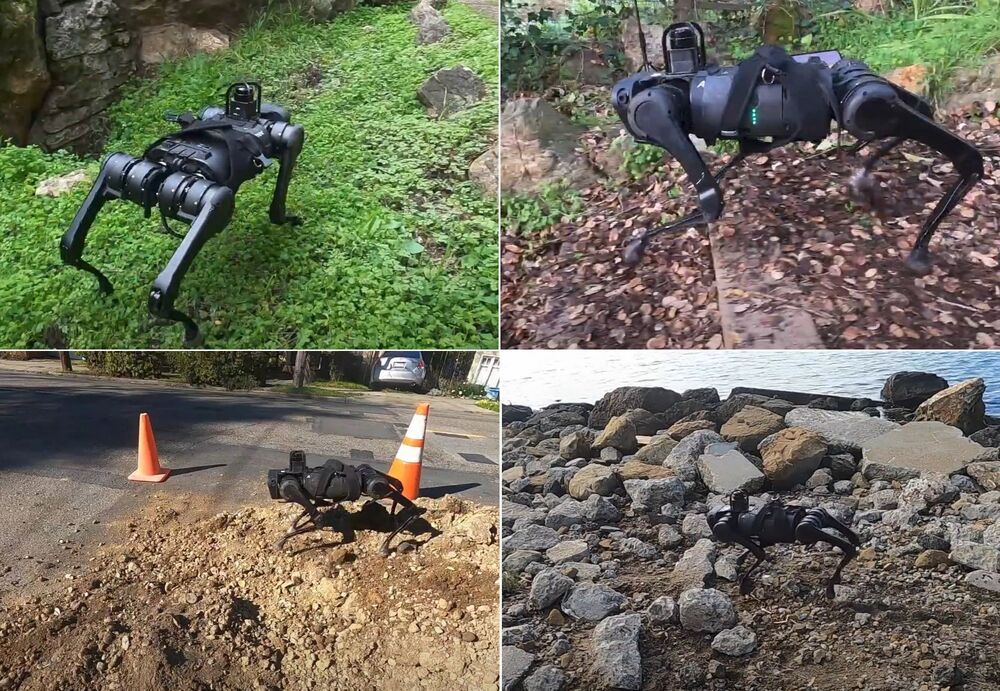Whether you sell or buy on Amazon — or both — this is good news.


“University Of The 3rd Age” — Seniors Staying Intellectually Challenged, Socially Engaged, And Physically And Mentally Healthy — Maya Abi Chahine, University for Seniors, American University of Beirut (AUB)
AUB (https://www.aub.edu.lb/seniors/Pages/default.aspx).
The University for Seniors is a new life-long learning initiative at AUB, the first of its kind in Lebanon and the Middle East. It gives older adults (who are 50 and above) the opportunity to share their wisdom and passion, to learn things they have always wanted to learn in a friendly academic environment and to interact socially with other seniors, AUB faculty and students.
Ms. Abi Chahine holds an MA in Public Policy & Ageing from King’s College London and is a passionate advocate and researcher in health, well being issues and third age learning. Her portfolio includes collaborations with UN agencies, including WHO, United Nations Population Fund, and International Labour Organization, as well as INGOs such as HelpAge International and universities in the UK.
Ms. Abi Chahine has 21 years of experience in setting-up and managing programs in the fields of public health, gerontology and education, notably universities. Throughout her multifaceted career, she developed skills in establishing and restructuring programs, by spearheading strategies, setting institutionalization mechanisms and driving daily operations that ensured customers and collaborators’ satisfaction and expansion.
Intelligent systems engineer, STEM advocate, hip-hop artist — ashley llorens, VP, distinguished scientist, managing director microsoft research, microsoft.
Ashley Llorens (https://www.microsoft.com/en-us/research/people/allorens/) is Vice President, Distinguished Scientist & Managing Director, at Microsoft Research Outreach, where he leads a global team to amplify the impact of research at Microsoft and to advance the cause of science and technology research around the world. His team is responsible for driving strategy and execution for Microsoft Research engagement with the rest of Microsoft and with the broader science and technology community, and they invest in high-impact collaborative research projects on behalf of the company, create pipelines for diverse, world-class talent, and generate awareness of the current and envisioned future impact of science and technology research.
Prior to joining Microsoft, Mr. Llorens served as the founding chief of the Intelligent Systems Center at the Johns Hopkins Applied Physics Laboratory (APL), where he directed research and development in artificial intelligence (AI), robotics and neuroscience and created APL’s first enterprise-wide AI strategy and technology roadmap. During his two decades at APL, Mr. Llorens led interdisciplinary teams in developing novel AI technologies from concept to real-world application with a focus on autonomous systems. His background is in machine learning and signal processing and current research interests include reinforcement learning for real-world systems, machine decision-making under uncertainty, human-machine teaming, and practical AI safety.
As a subject matter expert in AI and autonomous systems, Mr Llorens has served on advisory boards and strategic studies for the U.S. Department of Defense, the U.S. Department of Energy and the National Academy of Sciences. He was recently nominated by the White House Office of Science and Technology Policy to serve as an AI expert on the Global Partnership on AI and was elected to serve as the Science Representative on its inaugural steering committee.
Alongside Mr. Llorens career in engineering, while earning his B.S. and M.S. at the University of Illinois Urbana-Champaign, he pursued a parallel career as a hip-hop artist, also known as SoulStice, founding Wandering Soul Records and serves as a voting member of the Recording Academy, the institution that organizes the Grammys.
In other words, the mix of positives and negatives puts this potent new suite of technologies on a knife-edge. Do we have confidence that a handful of companies that have already lost public trust can take AI in the right direction? We should have ample reason for worry considering the business models driving their motivations. To advertising-driven companies like Google and Facebook, it’s clearly beneficial to elevate content that travels faster and draws more attention—and misinformation usually does —while micro-targeting that content by harvesting user data. Consumer product companies, such as Apple, will be motivated to prioritize AI applications that help differentiate and sell their most profitable products—hardly a way to maximize the beneficial impact of AI.
Yet another challenge is the prioritization of innovation resources. The shift online during the pandemic has led to outsized profits for these companies, and concentrated even more power in their hands. They can be expected to try to maintain that momentum by prioritizing those AI investments that are most aligned with their narrow commercial objectives while ignoring the myriad other possibilities. In addition, Big Tech operates in markets with economies of scale, so there is a tendency towards big bets that can waste tremendous resources. Who remembers IBM’s Watson initiative? It aspired to become the universal, go-to digital decision tool, especially in healthcare—and failed to live up to the hype, as did the trendy driverless car initiatives of Amazon and Google parent Alphabet. While failures, false starts, and pivots are a natural part of innovation, expensive big failures driven by a few enormously wealthy companies divert resources away from more diversified investments across a range of socially productive applications.
Despite AI’s growing importance, U.S. policy on how to manage the technology is fragmented and lacks a unified vision. It also appears to be an afterthought, with lawmakers more focused on Big Tech’s anti-competitive behavior in its main markets—from search to social media to app stores. This is a missed opportunity, because AI has the potential for much deeper societal impacts than search, social media, and apps.
Improving Quality Of Life & Health, For Hundreds Of Millions Globally, Suffering Food Allergies & Intolerances — Lisa Gable, Chief Executive Officer, Food Allergy Research & Education (FARE)
Lisa Gable is the Chief Executive Officer, of Food Allergy Research & Education (FARE — https://www.foodallergy.org), an organization with a mission to improve the quality of life and the health of 85 million Americans with food allergies and food intolerances, including 32 million of those are at risk for life-threatening anaphylaxis, and to provide them hope through the promise of new treatments. To date FARE has turned over $100 million in donor gifts into ground-breaking research and has provided a voice for the community, advocating on its behalf and offering hope for a better tomorrow.
Ms. Gable has served four U.S. presidents and two governors, counseled Fortune 500 CEOs, and represented global public-private partnerships and non-profits with an end goal of moving organizations to higher levels of performance.
As the former President of the Healthy Weight Commitment Foundation, Ms. Gable created and led a coalition of food and beverage industry corporations and public health and government agencies, resulting in the reduction of 6.4 trillion calories from the American diet.
Ms Gable was appointed the first female U.S. Commissioner General to the 2005 Aichi World EXPO, holding the personal rank of Ambassador, served as a U.S. Delegate to the United Nations Commission on the Status of Women, and served both in the Reagan White House and Defense Department, serving as an advisor to the Secretary of Defense and the Joint Chief of Staff.

We hand out cash freely to some people, while we plague others with fraudulent debt notices that may cripple financially, with dire ultimate consequences.
There is a case to be made for a universal basic income (UBI) — an unconditional payment to everyone that ensures the basics of life are catered for. It may give people security to leave a bad situation, or freedom to pursue a new future. No conditions means no bureaucracy, which improves productivity and efficiency, and the universal nature of UBI means even conservatives can get on board.
But how to afford such a payment? Surely giving away free money would blow the budget?
Money is fungible, so while some payments are labelled as welfare and other line items may be called discounts, its is only the bottom line* of the balance sheet that matters. Looking solely at the bottom line, we may be far closer to an Australian UBI than you think.
Consider low income individuals — we already have a safety net in Australia to provide the poorest in the community with some minimum standard of living. We give them money to ensure the basics are met — a payment already included in any commonwealth budget.
For higher income individuals — few would suggest giving them free cash, but if we simultaneously took the same away then there could be no reason to object. A net increase in tax for the better off could precisely offset their UBI payment, again leaving the bottom line unchanged.
We already give people an effective tax discount of several thousand dollars called the ‘tax free threshold’. If this discount were removed — such that you pay tax on every dollar earned — but replaced with an unconditional UBI payment, then any one individual may not notice the change in policy. Low incomes still get effective welfare payments, while higher incomes use their cheques of free money to pay the extra tax bill.

Something to consider.
“The whole idea of lifestyle choices as something everyone can tap into is misleading, when in fact that choice is constrained by what is available to people,” he said. “This is where policy solutions or investments into these neighborhoods to make up for historical disinvestment becomes so important.”
Summary: The neighborhood you live in could have an impact on your brain and cardiovascular health, a new study reports.
Source: American Heart Association
Liz Harris won’t let anything stop her from walking. Three mornings a week, she descends three flights of stairs and heads to Anacostia Park. It’s a 10-minute walk just to get there. If none of her friends are available, she walks alone. But they worry about her when she does.
“The community is known for crime, and you don’t feel comfortable walking alone,” said Harris, 72, who lives in southeastern Washington, D.C.’s Ward 8. But that’s not her only concern. Unleashed dogs in the park make her wary. The streets along the way are uneven and in disrepair. Heavy traffic can contribute to poor air quality.

Olympic stadiums can be costly and wasteful. Some have argued for a single, more sustainable, location that can be used year after year.
The summer Olympics have been a quadrennial tradition ever since the late 1800s—when modern sports and rivalries freshened up the ancient tradition. Since COVID-19 crashed the schedule for last years’ events, now the world is gearing up again for another round of competition in Tokyo.
Transporting athletes and fans from all over the world and to cities hosting the Olympic games comes with a gigantic carbon footprint, for example, the 2021 London Olympics had an estimated footprint of over 400 thousand tons of CO2 emissions. Constantly building brand-new stadiums every few years that often go unused after the games, with very few exceptions, is also extremely wasteful. The 2016 Rio Olympics whipped up a whopping 3.6 million tonnes of carbon when including all that went into infrastructure. Eerie listicles of decaying stadiums, including Rio’s, litter the internet with costly examples of the wasted hundreds of millions of dollars worth of labor and materials that go into just one site.
For as long as the games have existed, there have been proponents of having just one Olympic location. King George of Greece gave a speech offering to permanently host the games in the spirit of its origins in 1896, the year of the first modern Olympic games. Some countries, like the United States, agreed, while others, including Pierre de Coubertin who revived the modern Olympics, worried that it would make the games too Hellenistic and that it would hurt the international spirit behind the worldwide event. John Rennie Short, a public policy professor at the University of Maryland, has spoken in the past about the environmental and financial benefits of having the games in a singular location.

Robots have a hard time improvising, and encountering an unusual surface or obstacle usually means an abrupt stop or hard fall. But researchers have created a new model for robotic locomotion that adapts in real time to any terrain it encounters, changing its gait on the fly to keep trucking when it hits sand, rocks, stairs and other sudden changes.
Although robotic movement can be versatile and exact, and robots can “learn” to climb steps, cross broken terrain and so on, these behaviors are more like individual trained skills that the robot switches between. Although robots like Spot famously can spring back from being pushed or kicked, the system is really just working to correct a physical anomaly while pursuing an unchanged policy of walking. There are some adaptive movement models, but some are very specific (for instance this one based on real insect movements) and others take long enough to work that the robot will certainly have fallen by the time they take effect.
The team, from Facebook AI, UC Berkeley and Carnegie Mellon University, call it Rapid Motor Adaptation. It came from the fact that humans and other animals are able to quickly, effectively and unconsciously change the way they walk to fit different circumstances.
Portland, Oregon – June 21, 2021 – World-acclaimed space policy and law expert, who advises the U.S. House, Senate and White House, Paul Stimers, issued a stern warning regarding the U.S. space program on The Costa Report today. “Don’t try to do what China is doing. It’s a trap,” cautioned Stimers.
According to the Washington DC insider, as China’s state-sponsored space program accelerates and challenges U.S. leadership, the U.S. may be tempted to change course. Stimers reminds leaders this is a temptation which has historically produced dismal results. Instead, Stimers claims the best way to protect the U.S. lead in space is for the government to clear the path for “commercial space operations to scale.”
As an example, today the FAA treats every U.S. space flight as a one-off event, causing applications, clearances, etc., to be tedious, slow and costly. By making it possible to process ten, twenty, thirty of the same types of space flights at one time, commercial companies will be able to grow the industry much faster. Stimers urges U.S. leaders to streamline current regulations and procedures so space transportation becomes as routine as conventional airline travel. When leaders begin treating outer space as “a place, rather than a mission,” Stimers believes policies and regulations will fall in line with what U.S. commercial ventures need to stay in front.
Stimers also expressed concerns over China and Russia’s rejection of the Artemis Accords. NASA’s Artemis Accords spell out basic principles on how nations can peacefully operate in space — including fundamentals such as providing emergency mutual aid, sharing scientific knowledge, allowing access to newly discovered resources, etc. China and Russia’s refusal to join the agreement is one of many indications they intend to abide by a different set of rules in space – rules which include claiming ownership and exclusive use. Host of The Costa Report, Rebecca Costa, concurs, “He who establishes beachheads on the Moon, Mars and other celestial bodies first, makes the rules. We can’t afford to let China or Russia get there and carve everything into private property. What then? We go to war in space?”
The 1967 United Nations Outer Space Treaty was instrumental in setting the stage for peaceful collaboration between nations in space. The spirit of that treaty extended to the 1969 first landing on the Moon wherein the United States claimed victory for all humankind. And later, to the International Space Station (ISS) which has accommodated scientists and visitors from 19 countries. But recently, China has begun building its own space station – another indication they have nationalistic objectives. As the ISS reaches the end of its life cycle, there is growing concern that the U.S. and other nations may find themselves without a presence in low Earth orbit, posing grave security risks.